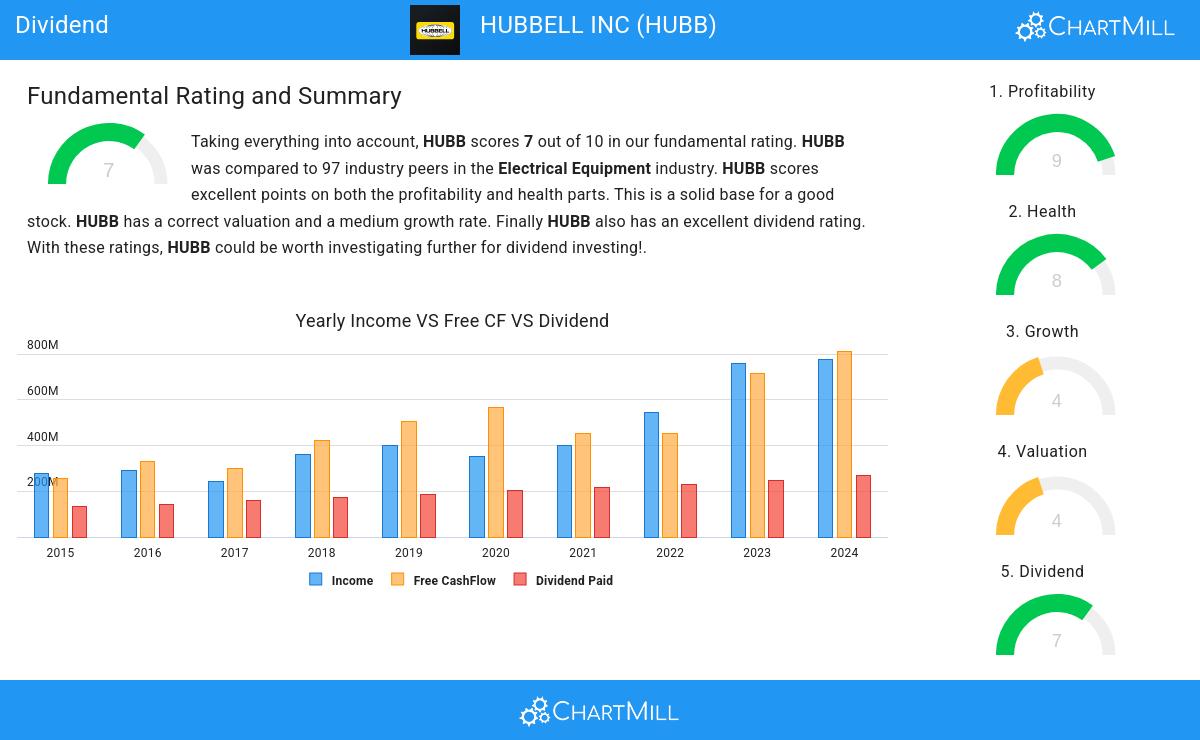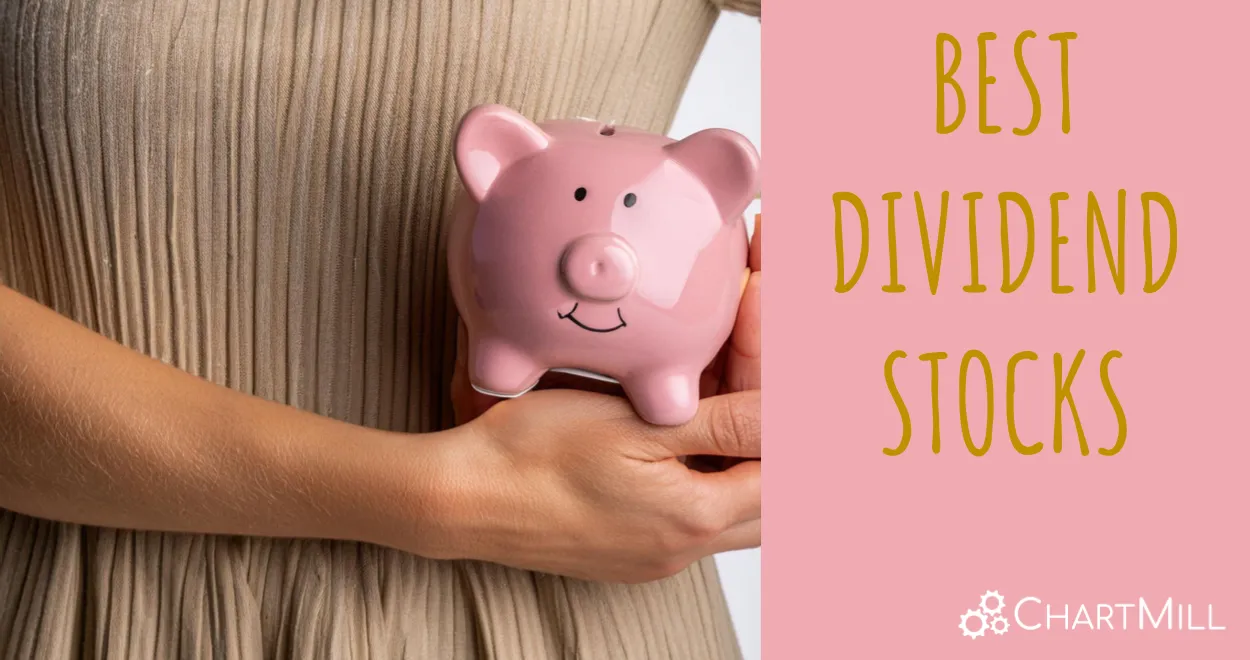Why HUBBELL INC (NYSE:HUBB) is a Top Pick for Dividend Investors.
By Mill Chart
Last update: Apr 5, 2025
Discover HUBBELL INC (NYSE:HUBB)—a stock that our stock screener has recognized as a solid dividend pick with strong fundamentals. HUBB showcases decent financial health and profitability while providing a sustainable dividend. We'll explore the specifics further.

How do we evaluate the Dividend for HUBB?
An integral part of ChartMill's stock analysis is the Dividend Rating, which spans from 0 to 10. This rating evaluates diverse dividend factors, including yield, historical data, growth, and sustainability. HUBB has received a 7 out of 10:
- HUBB's Dividend Yield is rather good when compared to the industry average which is at 4.39. HUBB pays more dividend than 90.72% of the companies in the same industry.
- On average, the dividend of HUBB grows each year by 7.79%, which is quite nice.
- HUBB has been paying a dividend for at least 10 years, so it has a reliable track record.
- HUBB has not decreased its dividend for at least 10 years, so it has a reliable track record of non decreasing dividend.
- HUBB pays out 34.43% of its income as dividend. This is a sustainable payout ratio.
Exploring HUBB's Health
ChartMill employs its own Health Rating for stock assessment. This rating, ranging from 0 to 10, is calculated by examining various liquidity and solvency ratios. In the case of HUBB, the assigned 8 reflects its health status:
- HUBB has an Altman-Z score of 5.33. This indicates that HUBB is financially healthy and has little risk of bankruptcy at the moment.
- HUBB has a better Altman-Z score (5.33) than 87.63% of its industry peers.
- HUBB has a debt to FCF ratio of 1.93. This is a very positive value and a sign of high solvency as it would only need 1.93 years to pay back of all of its debts.
- Looking at the Debt to FCF ratio, with a value of 1.93, HUBB belongs to the top of the industry, outperforming 86.60% of the companies in the same industry.
- A Debt/Equity ratio of 0.48 indicates that HUBB is not too dependend on debt financing.
- HUBB does not score too well on the current and quick ratio evaluation. However, as it has excellent solvency and profitability, these ratios do not necessarly indicate liquidity issues and need to be evaluated against the specifics of the business.
Exploring HUBB's Profitability
Discover ChartMill's exclusive Profitability Rating, a proprietary metric that assesses stocks on a scale of 0 to 10. It takes into consideration various profitability ratios and margins, both in absolute terms and relative to industry peers. Notably, HUBB has achieved a 9:
- HUBB's Return On Assets of 11.62% is amongst the best of the industry. HUBB outperforms 95.88% of its industry peers.
- With an excellent Return On Equity value of 23.75%, HUBB belongs to the best of the industry, outperforming 94.85% of the companies in the same industry.
- HUBB's Return On Invested Capital of 15.56% is amongst the best of the industry. HUBB outperforms 94.85% of its industry peers.
- HUBB had an Average Return On Invested Capital over the past 3 years of 14.28%. This is above the industry average of 9.62%.
- The 3 year average ROIC (14.28%) for HUBB is below the current ROIC(15.56%), indicating increased profibility in the last year.
- HUBB has a better Profit Margin (13.79%) than 94.85% of its industry peers.
- In the last couple of years the Profit Margin of HUBB has grown nicely.
- Looking at the Operating Margin, with a value of 19.62%, HUBB belongs to the top of the industry, outperforming 97.94% of the companies in the same industry.
- HUBB's Operating Margin has improved in the last couple of years.
- HUBB's Gross Margin of 33.99% is fine compared to the rest of the industry. HUBB outperforms 79.38% of its industry peers.
- In the last couple of years the Gross Margin of HUBB has grown nicely.
Every day, new Best Dividend stocks can be found on ChartMill in our Best Dividend screener.
Check the latest full fundamental report of HUBB for a complete fundamental analysis.
Keep in mind
This article should in no way be interpreted as advice. The article is based on the observed metrics at the time of writing, but you should always make your own analysis and trade or invest at your own responsibility.
448
-14.82 (-3.2%)
Find more stocks in the Stock Screener
HUBB Latest News and Analysis



